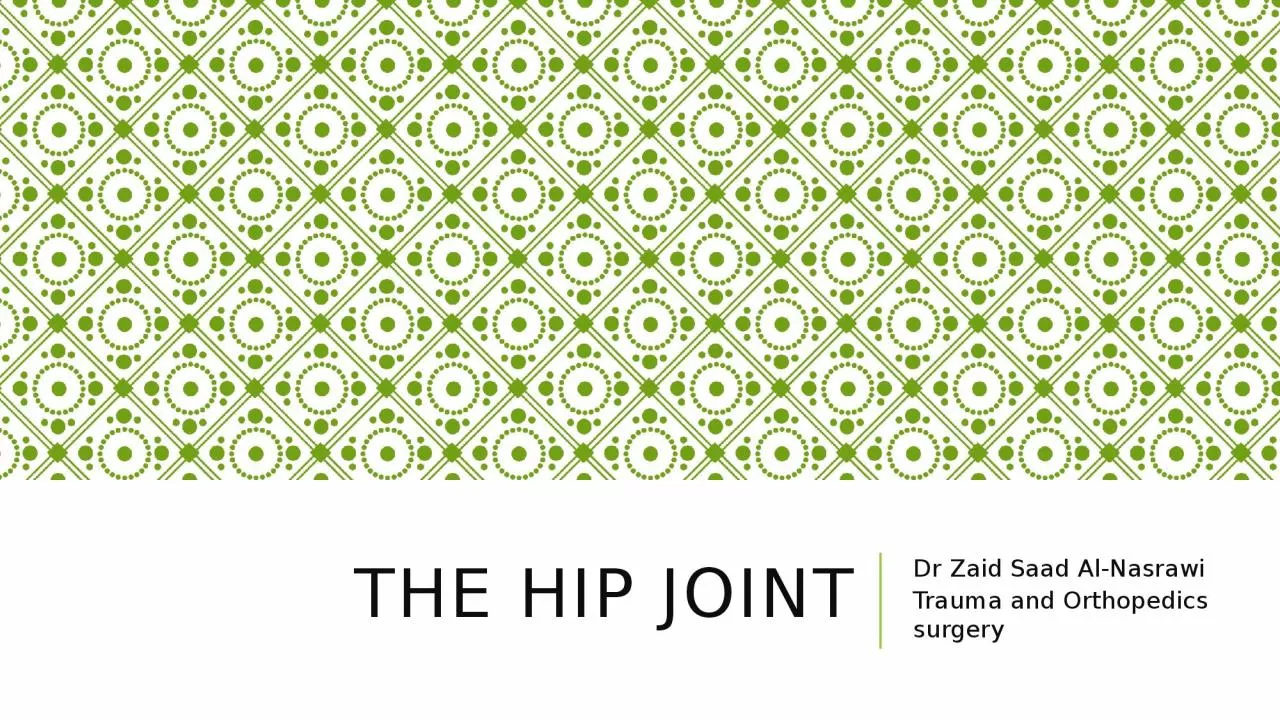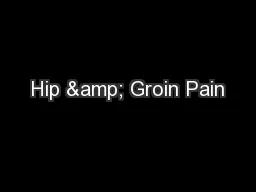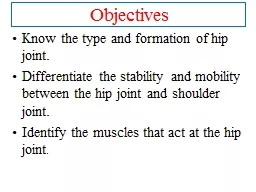PPT-The Hip Joint Dr Zaid Saad Al-Nasrawi
Author : delcy | Published Date : 2023-07-18
Trauma and Orthopedics surgery The Hip joint The hip joint is a synovial ballandsocket joint the femoral head functioning as a ball with the acetabular cavity or
Presentation Embed Code
Download Presentation
Download Presentation The PPT/PDF document "The Hip Joint Dr Zaid Saad Al-Nasrawi" is the property of its rightful owner. Permission is granted to download and print the materials on this website for personal, non-commercial use only, and to display it on your personal computer provided you do not modify the materials and that you retain all copyright notices contained in the materials. By downloading content from our website, you accept the terms of this agreement.
The Hip Joint Dr Zaid Saad Al-Nasrawi: Transcript
Download Rules Of Document
"The Hip Joint Dr Zaid Saad Al-Nasrawi"The content belongs to its owner. You may download and print it for personal use, without modification, and keep all copyright notices. By downloading, you agree to these terms.
Related Documents














